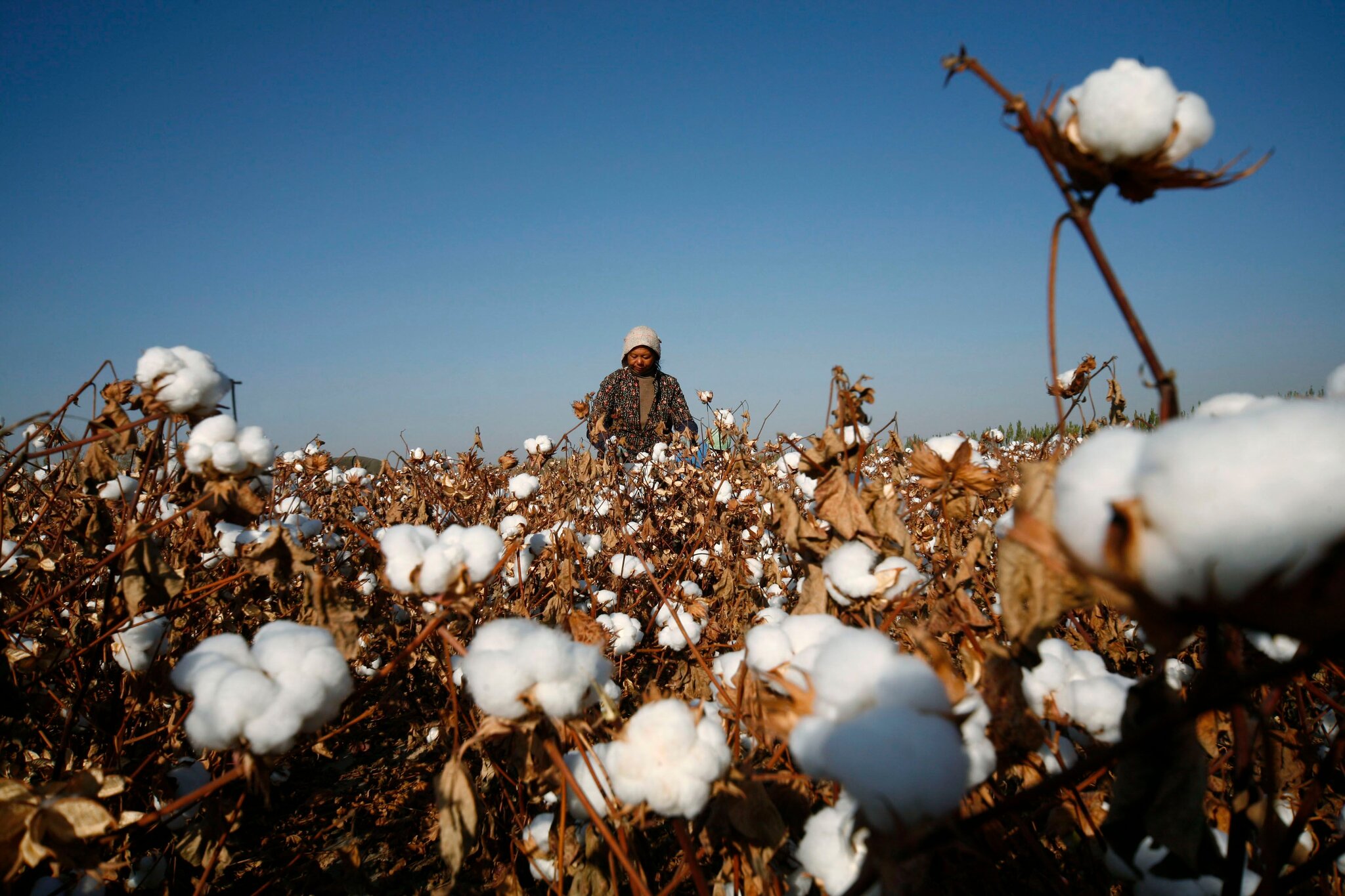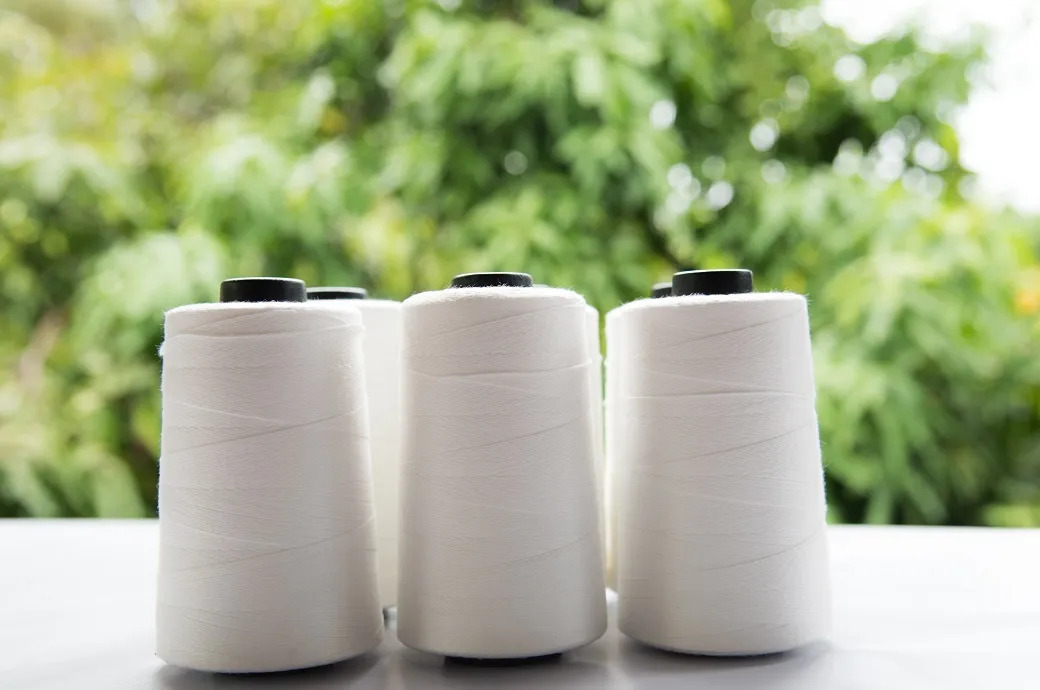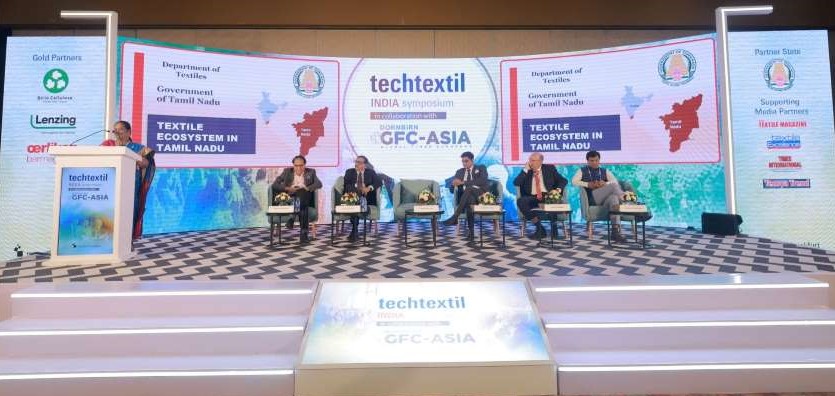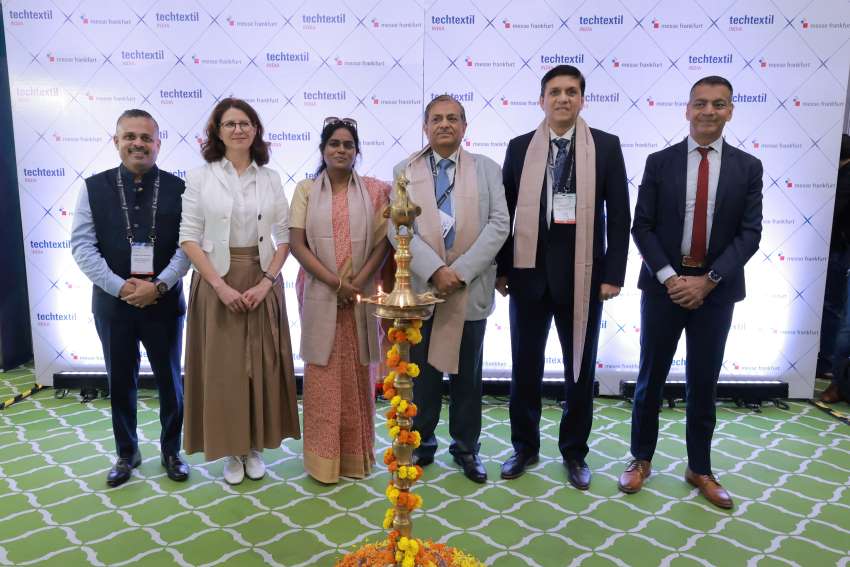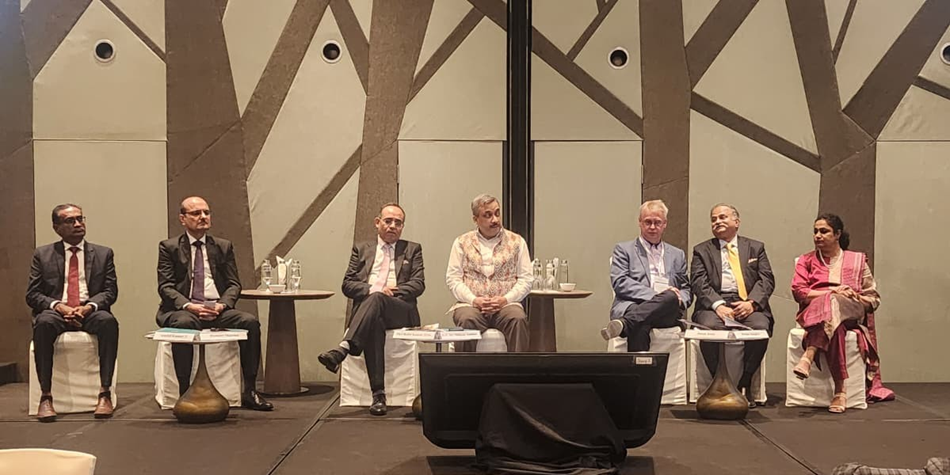FW
"The premium denim jeans market is forecast to grow at CAGR 8 per cent globally as per a recent study by Technavio. The report gives an overview of the present market scenario along with a forecast on the prospect of premium denim jeans during 2016-2020. The study further calculated the market size considering the revenue generated from retail sales of premium denim jeans to individual customers globally. The report also gives insight to market segmentation as per end customers, various retail formats and geographical segmentation."

The premium denim jeans market is forecast to grow at CAGR 8 per cent globally as per a recent study by Technavio. The report gives an overview of the present market scenario along with a forecast on the prospect of premium denim jeans during 2016-2020. The study further calculated the market size considering the revenue generated from retail sales of premium denim jeans to individual customers globally. The report also gives insight to market segmentation as per end customers, various retail formats and geographical segmentation.

The report primarily highlights three key factors that are contributing to the growth of global premium denim jeans market. Recycled jeans from plastic and other materials, rise in demand for stretch jeans and also increasing demand HNWI and a status symbol are the major factors that Technavio analysts discussed.
Fast fashion striving to reduce environmental impact
In a bid to promote sustainable clothing for better, secure future, manufacturers are striving hard to reduce the use of hazardous chemicals and also reduce greenhouse emissions. Elaborating on the effort by various brands Brijesh Kumar Choubey, lead analyst at Technavio for apparel and textile research points out , sustainable jeans are not only a concept for the developed nations but are also gaining prominence in developing countries, including India and China.
Simultaneously, one of the most popular denim brand Levi’s, a major supporter of sustainable clothing industry, has introduced a line of jeans made of post-consumer waste like recycled plastic bottles and food trays under the ‘Waste>Less’ brand for both men and women. The company has also developed a process of using plastic sourced from brown beer bottles, green soda bottles, clear water bottles, and black food trays for manufacturing its denim material. It is also taking initiative to greatly reduce the water up to 98 per cent and a significant amount of pesticide use while growing the cotton and economically supports hundreds of thousands of cotton farmers. It has partnered with textile technology start-up Evrnu, SPC to create the world’s first jean made of cotton recycled from five discarded cotton T-shirts to make new fiber in the form of a pair of Levi’s 511 jeans.
Preference for stretch jeans to stay
The Technavio report also delves into the market size and demand for stretch jeans. It suggests that manufacturers are replacing cotton with synthetic fibers for manufacturing denim jeans. Although the cost of product for stretch denim jean is 10-15 per cent higher than non-stretch denim, but consumer preference is in peak. The primary reasons behind growing demand for stretch jeans is that stretch fabric retains the shape and fit can be personalized even after frequent washes. Another benefit of stretch fibers is the apparel maintains its shape without bagging in the knee or other areas, which the consumers appreciate. While stretch was being used for women’s wear but today the trend is also evident in menswear.
HNWI with high aspirations driving market
The growing population of upper middle-class and high net worth individuals (HNWI) drives the luxury denim jeans market. According to Technavio, Asian countries exceeded North America as home to the largest HNWI population, with a rise to 4.69 million in 2014, an 8.5 per cent increase from a year earlier. China and Japan are the two emerging countries in global market, registering a double-digit growth in the HNWI population and ultra-HNWI wealth growth. These countries together accounted for nearly 60 per cent of the global HNWI population growth is fuelling growth of premium denim jeans market globally.
Latest issue of Textile Outlook International says, several major clothing exporting countries could lose their preferential access to the UK market when Britain leaves the EU. Unless special terms of access are negotiated, Britain’s withdrawal from the EU, a process commonly known as Brexit, could have major consequences for such suppliers given the size of the UK market.
Last year, the UK was the EU’s second largest clothing import market in value terms after Germany with a 17.7 per cent share of EU clothing imports into all member states. And in volume terms, it was the largest market with a 22.1 per cent share. Because the UK is a member of the EU, exporters in many developing countries like Bangladesh, Cambodia, Myanmar, Pakistan and Peru enjoy duty-free access to the UK textile and clothing market under arrangements which form part of the EU’s Generalised Scheme of Preferences (GSP). At the same time, imports from Turkey are allowed to enter the UK duty-free and quota-free under the Customs Union between Turkey and the EU. Additionally, while the UK remains a member of the EU, exporters in Vietnam stand to gain from improved access to the UK import market when the EU-Vietnam free trade agreement comes into force.
But if and when the UK leaves the EU, imports into the UK from poorer countries such as Bangladesh and Cambodia will, by default, be subject to a common external tariff as declared to the World Trade Organization (WTO) unless special trade agreements are put in place to provide these countries with preferential access to the UK market in particular. While referring to the WTO, it is worth noting that, technically, the UK would have to join the WTO on its own account if and when it left the EU. Moreover, UK membership of the WTO would require the approval of all of the WTO’s member states.
Lenzing will expand and modernize its existing dissolving wood pulp production. Additional new specialty fiber capacities of around 35,000 tons will be added over the next two and a half years. The aim is to increase dissolving wood pulp production from 56 to 75 per cent of the group’s requirements for the production of botanic cellulose fibers by the end of the decade. The modernization will increase efficiency of the plants.
The upgrade and expansion of the bio-refinery setup will underline Lenzing’s leadership as the most sustainable fiber producer. Lenzing’s bio-refinery concept is based on using only certified wood from countries in western and central Europe. It is an essential part of Lenzing’s mission to turn Co2 and sunlight into high value fibers, as it ensures that 100 per cent of the wood components are used to produce fibers, bio-chemicals and bio-energy. This investment is also an essential part of Lenzing’s quality strategy, as the high quality of its botanic fibers depends on the quality of the dissolving wood pulp.
Lenzing, based in Austria, supplies the global textile and nonwoven industry with high quality, botanic cellulose fibers. Its portfolio ranges from dissolving wood pulp to standard and specialty cellulose fibers.
Levi Strauss’ net income rose 69 per cent in Q3 thanks to cost-cutting efforts and rising revenues. Net revenues grew four per cent on a reported basis and five per cent in unfavorable currency translation effects. Revenue growth was due to increased direct-to-consumer sales, which grew 14 per cent in the quarter for stores and e-commerce.
Excluding currency fluctuations, costs were lower thanks to reductions in advertising costs and restructuring-related charges. The company is opening more own stores. There will be 42 more company-operated stores at the end of the third quarter of 2016 than at the end of the same period last year.
Levi’s has struggled in recent years, first as high-end jeans usurped its iconic place as the go-to denim maker and then as athleisure took over as the favored way to dress around town. Levi Strauss’ direct-to-consumer business continues to drive its results with both brick and mortar and e-commerce growing double digits.
Levi Strauss jeans are used by both workers as well as rock stars. It’s known for the 501 design and now the brand is adding stretch to this line. The move has been prompted by consumer preferences for comfort, which has women especially wearing yoga pants beyond their exercise classes.
Gap Inc is looking at emerging economies for growth as it struggles to arrest the decline in comparable sales and faces intense competition from fast fashion brands in the domestic market. A year after it entered the Indian market, the company will now sell its products online in the country, exclusively on Arvind Group’s fashion portal NNNow.com.
E-commerce in India is growing at a fast pace and tier II and tier III cities in the country are contributing significantly towards this growth. Most foreign brands do not have stores in these cities and the online channel is the only way for consumers to acquire these brands.
With growing disposable incomes of the semi-urban population in India, demand for foreign fashion products is increasing. The online foray will give Gap an edge over other foreign retailers such as H&M and Zara in India and allow it to tap into the growth outside of metro and tier I cities in the region. This strategy should drive overall growth for Gap in the region making it a revenue driver in the long term. With competitors such as Zara and H&M focusing on store expansion, Gap’s strategy to foray into the Indian online retail market can give it a competitive edge.
According to a report by Edelweiss Broking, the branded garment’s segment in India will grow to 48 per cent in 2019 of the overall ready-made garments market in the country from the 35 per cent level of 2014. The Indian branded apparel industry is estimated to be $10 billion in size and growing at 10-12 per cent rate per annum according to the report.
In a way, cotton farmers agree that it’s everyone’s right to grow the crop the way they wish but those that have chosen to grow organic product are looking for better ways to co-exist with those that haven’t. In a talk at Textile Exchange’s Organic Cotton Roundtable in Hamburg, Germany, farmers, breeders and those in organizations representing farmers and breeders came up with their views on the challenges of co-existence of organic and GM cotton.
Michael Sligh, Program Director for the Rural Advancement Foundation International (RAFI), who has been farming organically on a large scale since the 1970s, said the current cotton environment isn’t one of co-existence. He said organic cotton community is doing everything one knows to protect the farming community from unwanted pesticides and GMO drift.
Organic cotton farmers do everything they can to avoid the scenario, but sometimes nature prevails and what would have been organic cotton, as it was farmed as such, has to get turned back over to the conventional market and not bring in a premium. Last year, the organisation lost 22 per cent of its organic cotton product because of contamination. And while that translates to a hit on the bottom lines, the industry must have felt it harder to put up a face to the small farmers.
Sri Lanka’s Brandix Group, has emerged top rankig exporter and the largest employer in the country’s export sector, and was adjudged the sole winner of the 2016 ‘HR Awards for HR Excellence in South Asia’ (excluding India). The award was presented by the Society for Human Resource Management (SHRM). The awards ceremony recently.
The award in the international category, is the only one awarded to organizations the whole of South Asia recognises outside India that have successfully designed and implemented excellent people management practices and systems in human resources. The award, accompanied by a Certificate of Achievement for ‘Excellence in HR, South Asia’ was accepted on behalf of the Group by Ishan Dantanarayana, Chief People Officer at Brandix.
The award presented to Brandix evaluates multiple facets of the Group’s HR practices across a wide array of functionalities. Ranked the highest employment provider in Sri Lanka’s export industry from 2012 up to the latest awards presented by the Export Development Board (EDB), Brandix received the Gold award and the award for Best HR Practices in the ‘Leadership and Key Talent Management’ category at the last National HRM Awards held in 2014. In 2012 too, the Group won Gold at the National HRM awards.
The Brandix Group’s approach to human resources management has also received worldwide attention through the best-selling book ‘Work Rules!’ (insights from Inside Google) by Laszlo Bock, Senior Vice President of People Operations at Google Inc., USA. In it, the author describes how the Brandix Group inspires a large female workforce by telling employees to ‘come as you are and harness your full potential’ and lists some of the employee development and welfare initiatives implemented by the Group.
The suspension of gas transmission because of a leak in the pipeline at Elenga in Tangail district, production of hundreds of textile and garments factories has come to a standstill in Konabari and Gazipur Industrial area for the last one week. Exporters are finding it tough to dispatch products overseas on time. They might also have to resort to expensive air shipments to meet the deadline. They might even have to offer discounts if they miss the deadline.
Factories at Konabari, Shafipur, Rajendrapur, Kashimpur, Mouchak, Mirzapur, Gazipur, Ashulia, Savar and Kaliakoir areas are the worst hit. More than 1,200 textile and garment factories have either suspended production or are running with electricity. They recently met the prime minister to express their concern and expressed concern to the energy minister as factory owners have been suffering for the last one week. They want an immediate solution as owners will face difficulties in timely shipment of goods as production halts. The situation at the spinning mills is the worst as the spinning, dyeing and washing plants require continuous supply of gas with adequate pressure.
This year, Australian cotton crop is expected to be about four million bales as the planting season starts to move into full swing. Wet weather is a large reason the crop would be so successful. Across the cotton belt, good winter rains have seen the major storage dams fill up. More rain in early to mid-November when the soil temperature would be a lot warmer would be beneficial to cotton producers. So there is great enthusiasm and interest in cotton production.
Cotton industry in Australia is more modern than it used to be and farming as a whole is done with latest technologies, such as autonomous tractors and even robots. Yields in cotton in Australia are the highest in the world. Cotton Australia is using this success to kick start a new program that will see young people try out the industry.
The program will provide an opportunity to connect school leavers with cotton enterprises seeking operational staff. It would suit two groups of students - those seeking 12 months of employment in a unique rural and regional location and those seeking practical experience relevant to their future studies and a career in agriculture. Participants will be supported by the cotton industry to make sure they are job ready.
Bangladesh's readymade garment (RMG) accessories sector is now seeing a sound growth globally for its competitive price and standard. Global buyers are attracted by Bangladesh companies for their spirited prices, global standards and improvements in workplace environment. The sector is growing 10 to 15 per cent on a year-on-year basis for the last 10 years. Local businesses fetched export worth $ 3.5 billion in the last financial year (FY'16) a 25 per cent growth compared to FY'15.
President of Bangladesh Garments Accessories and Packaging Manufacturers and Exporters Association (BGAPMEA) Abdul Kader Khan says for better quality and competitive price, many buyers are shifting to Bangladesh from China, India and other countries. Hence, demand for local garment accessories is growing in the international market. Meanwhile, the BGAPMEA has set a target of exporting apparel accessories and packaging products worth $4 billion billion in FY'17.
Proprietor of Zerin Tex, suppliers of fabrics, yarn and accessories Juber Alam says currently more than 96 per cent demand for garment accessories is being met from local production and the rest 5 per cent is being imported. Plastic accessories being manufactured locally are corrugated cartons, poly bags, buttons, zippers, and labels etc which are an integral part of RMG export.

